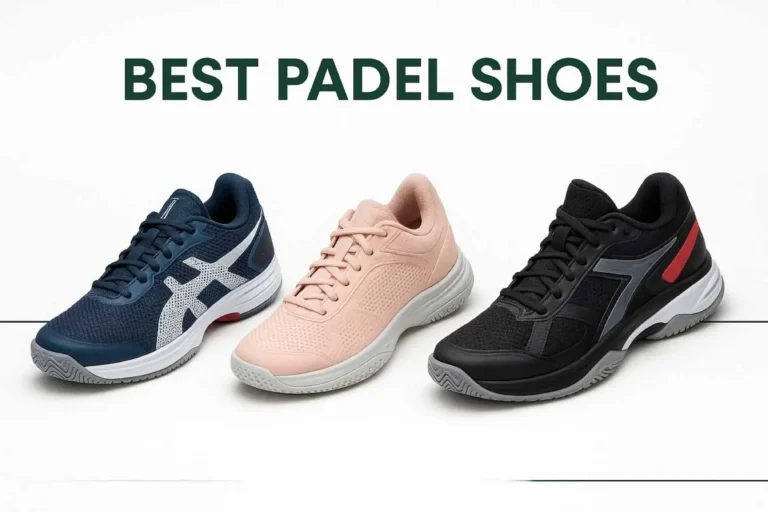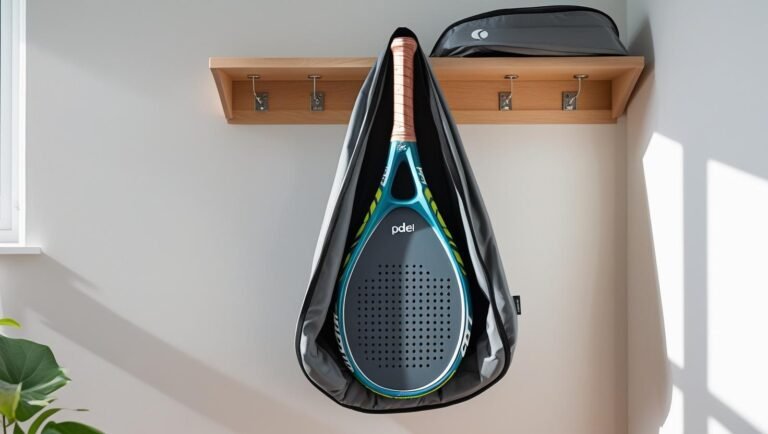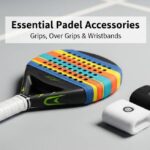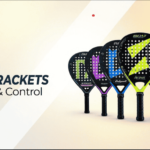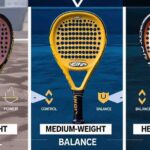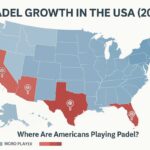Want a shortcut? Take a quiz and find your perfect Padel Racket in 30 secs.

The Booming Padel Equipment Market in the US: 2026 Trends & Insights
Padel is making significant waves in the United States, and the padel equipment market in the US is booming in tandem. Once considered a niche European sport, padel has captured the attention of fitness lovers, racket sports enthusiasts, and even celebrities across America. As more clubs open and tournaments take place across the country, players are investing in high-quality rackets, balls, shoes, and accessories to enhance their game.
But what’s really driving this surge in demand? In this guide, we’ll break down the current size, trends, and future outlook of the padel gear industry in the U.S., helping you understand where the market stands and where it’s headed. Whether you’re a new player, retailer, or investor, this insight will show you how the U.S. padel equipment industry is evolving—and what it means for your next step on or off the court.
Quick Tip: Want to upgrade your gear? Discover the top padel rackets for beginners and play smarter from the start.
What’s Driving the U.S. Padel Equipment Market Growth?
The padel equipment market in the US is experiencing rapid growth, driven by several key factors. As courts emerge in significant cities and padel becomes more visible on social media, demand for gear such as rackets, shoes, and bags is rising rapidly.
1. Surge in Padel Court Construction
States like Florida, Texas, and California are seeing rapid growth in new padel clubs and dedicated sports complexes. As accessibility improves, more players are buying padel rackets, grips, and balls to join the action.
2. Influence of Celebrities and Pro Athletes
Stars like David Beckham and LeBron James have shown interest in padel, which has helped boost its popularity. This exposure has led to more casual players researching the sport and purchasing entry-level padel equipment to try it themselves.
3. Rising Interest from Gen Z and Millennials
These younger demographics are seeking fun, social ways to stay active, and padel offers just that. This is driving strong demand for stylish, performance-driven gear, especially from trendy brands.
4. Growth of Online Retailers
E-commerce platforms like Amazon and specialised padel websites are making gear more accessible nationwide. Players in areas without clubs can still shop online and get everything from padel shoes to rackets and balls delivered to their door.
Did You Know? The average cost of a good beginner padel racket in the U.S. is between $80 and $150, and sales have more than doubled in the last two years.
Top-Selling Padel Equipment in the U.S. Right Now
The padel equipment market in the US is being shaped by a few standout products that dominate both beginner and pro shopping lists.
Among rackets, the Nox ML10 Pro Cup, Bullpadel Vertex 03, and Adidas Adipower are currently leading the market. These rackets are perfect because they strike a balance between control and power, catering to players of all levels. Their popularity indicates that U.S. players are increasingly opting for professional-grade gear, even in the early stages of their journey.
Padel balls are another top-selling item. Brands like Head and Wilson have launched US-specific versions that better handle the climate and court types. Their quality and durability make them go-to choices for clubs and individual players alike.
When it comes to footwear, shoes like Asics Gel-Padel and Babolat Movea are trending. These provide lateral support and grip designed explicitly for padel courts, unlike general tennis shoes.
Grips and overgrips have also seen a sales boost. American players are buying in bulk, especially during tournament seasons or local club events.
This surge in product demand is proof that the padel equipment market in the US is maturing quickly, creating opportunities for both established and emerging brands.
Want to stay ahead of the padel trend? Shop the latest US padel gear here before it goes mainstream!
Ready for More?
- Best padel racket for your playing style
- Best Nox Padel Rackets
- Nox vs Wilson: Which Padel Racket Brand is Better?
- Why Do Padel Rackets Have Holes
- Head vs Nox: Which Padel Racket Brand is Best for You?
- Why Do Some Padel Rackets Cause Elbow Pain
- Best Junior Padel Rackets for Young Players
- Best carbon fibre padel rackets
- Why Does Padel Racket Weight Matter So Much?
- Best Padel Shoes for top players
How U.S. Consumers Are Shopping for Padel Gear (Online vs. In-Store)
The padel equipment market in the US is evolving in response to consumer behaviour, particularly in how players shop for gear. From online convenience to in-store trial experiences, buying patterns are shaping brand strategies.
Online Shopping Is Driving Growth
Most new padel players in the U.S. are turning to e-commerce platforms like Amazon, Tennis Warehouse, and even dedicated padel gear sites. Online shopping offers:
- Wider selection of rackets, shoes, and balls
- Customer reviews to help first-time buyers
- Easy price comparisons and seasonal discounts
Brands like Nox and Bullpadel are leveraging Amazon’s reach with exclusive models and faster shipping, especially in key states like Texas and Florida.
In-Store Experience Still Matters
Despite the online boom, many buyers still prefer testing equipment in person. Specific sports stores, especially in cities like Miami, Los Angeles, and New York, now feature demo sessions and expert guidance. Clubs with attached pro shops also drive in-store sales by allowing players to try rackets on the court before making a purchase.
The balance between these two channels is shaping how fast and where the padel equipment market in the US grows.
Challenges in the U.S. Padel Equipment Market
While the padel equipment market in the US is expanding rapidly, several challenges are slowing its full potential.
The limited availability of retail outlets is a key issue. Many sports stores still focus heavily on tennis and pickleball, making it challenging for new padel players to find quality rackets, balls, and shoes in local shops. This forces buyers to rely mostly on online shopping, which can result in delayed delivery and make product testing difficult.
Another obstacle is the lack of product awareness. Since padel is still emerging in the U.S., many potential players are unaware of the differences in equipment compared to tennis. For example, beginners often mistakenly buy tennis rackets or balls, which don’t work for padel.
Import costs and pricing are also barriers. Most top padel brands are based in Europe, and shipping costs, as well as import duties, can significantly increase retail prices. This makes padel gear less affordable for casual players compared to more mainstream sports.
Finally, limited brand presence and sponsorships reduce the exposure of padel gear in American media. Without high-visibility endorsements or product placements, it’s harder for the market to build trust and recognition.
Despite these issues, brands and retailers are slowly adapting to demand. As more people explore the sport, these hurdles are likely to diminish, opening more opportunities for the padel equipment market in the US to flourish.
Top Brands Leading the U.S. Padel Equipment Scene
As padel’s popularity grows in the United States, several international and emerging local brands are stepping up to meet player demand. These brands are becoming household names among padel enthusiasts and are helping shape the padel equipment market in the US.
NOX—Known for its high-quality rackets, NOX has a strong presence in Europe and is gaining traction in the U.S. thanks to its sleek designs and endorsements from professional players. Their beginner-friendly and pro-level rackets are helping American clubs and players upgrade their gear.
Bullpadel—Bullpadel is another European brand making waves in U.S. markets. With a wide range of rackets, shoes, and bags, Bullpadel is often the first choice for clubs seeking reliable, performance-tested gear.
HEAD—Already famous in tennis, HEAD is capitalising on its reputation to dominate in padel. Its U.S. marketing and distribution networks are giving it a head start, especially for players transitioning from tennis to padel.
Adidas Padel— Leveraging its massive global recognition, Adidas is expanding its padel line in the U.S., offering stylish, durable gear that appeals to younger audiences and fitness-focused players.
Smash Padel USA—a newer U.S.-based company —is working to localize equipment production and distribution, offering faster delivery and competitive pricing to American players.
These brands not only supply top-tier products but also sponsor events, coaching programs, and club expansions. Their efforts are key in building a sustainable infrastructure for padel gear in the U.S.—and they’re helping drive growth in both participation and sales.
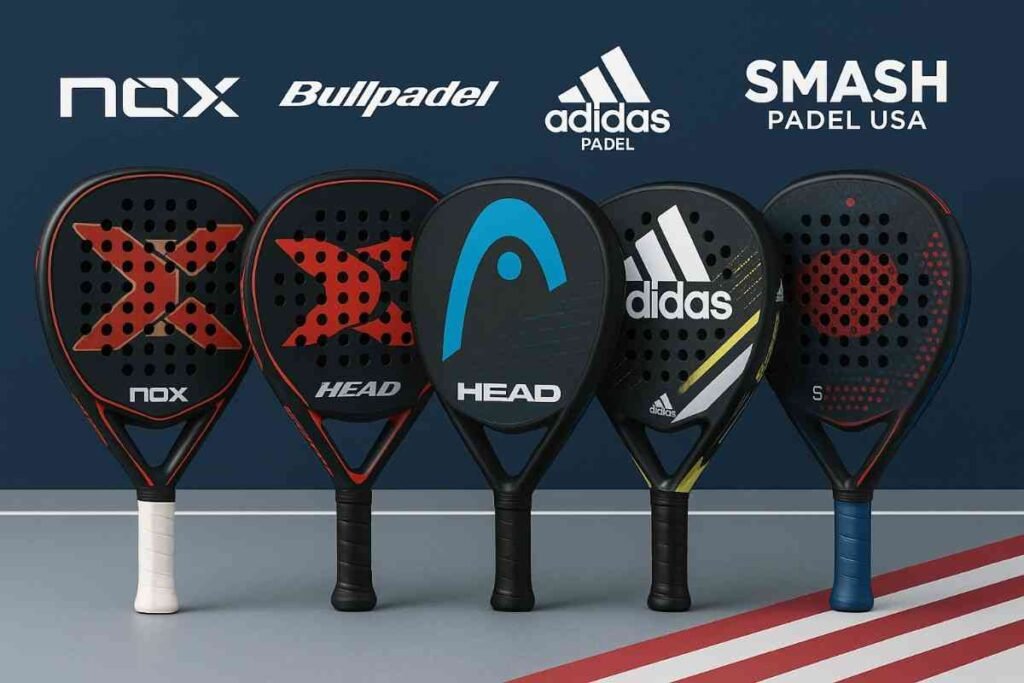
Investment and Sponsorship Trends Fueling Market Growth
The padel equipment market in the US is not only expanding due to consumer demand, but investors and sponsors are also driving rapid development. From real estate groups building multi-court clubs to athletic brands entering the padel gear market, money is flowing into the sport like never before.
Key investment trends shaping the market:
- Padel-focused facilities: Major developers are investing in padel-specific clubs across states like Florida, Texas, and California. These hubs not only generate local interest but also boost equipment sales as more players join.
- Brand partnerships: Sportswear giants like Adidas and Babolat are partnering with U.S. distributors to promote their padel product lines. Their marketing pushes include social media campaigns, tournaments, and player sponsorships.
- Celebrity involvement: Famous athletes and influencers are endorsing padel gear, making it more appealing to a younger, trend-driven audience. These collaborations help introduce international brands, such as Nox and Bullpadel, to the American market.
According to industry insiders, sponsorship spending is expected to rise by 40% over the next two years, making it a key pillar in the growth of the padel equipment market in the US.
Conclusion: Is the Padel Equipment Market in the US Ready for a Boom?
The padel equipment market in the US is clearly on an upward trajectory, driven by growing participation, global brand interest, and expanding infrastructure. With increased awareness, rising youth engagement, and substantial investments, the U.S. market is poised to replicate the success seen in Europe and Latin America.
However, challenges such as limited court availability, high gear costs, and a lack of coaching still need to be addressed. For businesses and investors, this presents a golden opportunity to enter early and help shape the future of padel in the United States.
Want to join the movement?
Explore our top picks for professional padel rackets and start playing today—or set up your club to ride the wave of this growing sport.
Ready for More? You’ll Love This Insight
- How to Choose the Right Padel Racket
- Best Babolat Padel Rackets
- Head vs Babolat: Which Padel Racket Brand is Better?
- Best Padel Rackets for Women
- Best Padel Rackets for Men
- Nox vs Adidas – Which Padel Racket Brand is Right for You in 2026?
- The Difference Between Fibreglass and Carbon Padel Rackets
- How to Replace the Grip on a Padel Racket
- Can You Use a Tennis Racket for Padel?
- Head vs Wilson: Which Padel Racket Brand is Better in 2026?
- Best Padel Racket Accessories
- Head vs Adidas: Which Padel Racket Brand is Best for You?
- Adidas vs Wilson: Which Padel Racket Brand is Better?
- The Evolution of Padel Rackets Over the Years
- Nox vs Babolat: Which Padel Racket Brand is Better in 2026?
FAQs
The U.S. padel equipment market is growing rapidly and is expected to surpass $40 million by 2026, driven by increasing participation and facility expansion.
Brands like Nox, Bullpadel, Adidas, and Babolat are gaining popularity due to their global presence and performance gear.
States like Florida, California, Texas, and New York show the highest demand due to increased club openings and player interest.
While some premium rackets and accessories are costly, budget-friendly starter sets are available online and in select clubs.
You can find quality padel gear on platforms like Amazon, Padel USA, and specialized sports retailers.

